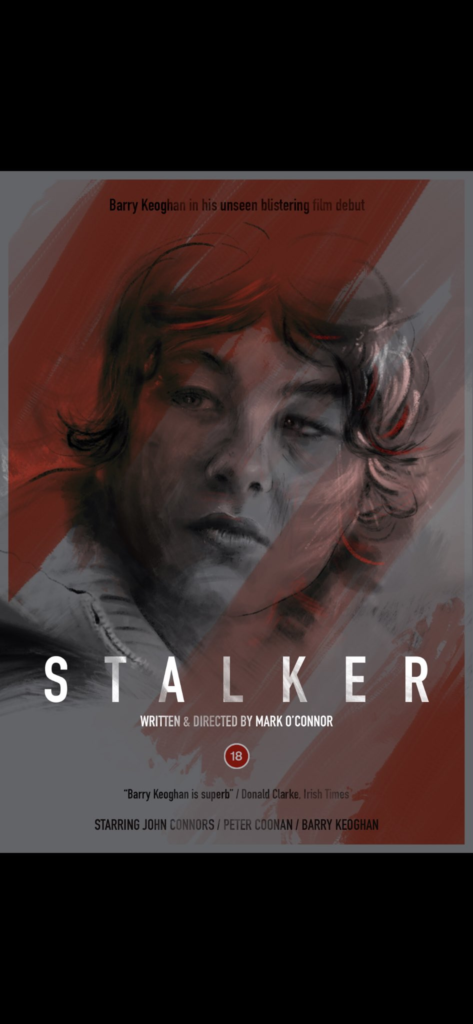
The conventional film business is one of the most organized and established. Only a few film studios and streaming corporations control the majority of the worldwide film business.
On the other side, non-fungible tokens (NFTs) and a growing crypto-centric community of enthusiastic filmmakers have the potential to upend the business.
While some independent projects focus on distribution, others take a look at Web3 filmmaking. The future of community-based film production and presentation is also demonstrated via decentralized streaming. NFTs’ popularity will lead the Film3 ecosystem to develop past its infancy.
Keep an eye on this developing crypto business as it gains pace, despite the fact that the trend is still in its early stages and many problems need to be worked out.
Begin the tape
Filmmaker Miguel Faus spoke about using NFTs from his short film Calladita to finance a million-dollar feature film of the same name at a panel discussion at the Cannes Film Festival in May. In 2019, Faus made his short film using fiat through traditional crowdfunding. He is currently selling tier-based NFT packages to raise money for the feature-length movie. “The proposed budget is $950,000.” We have so far raised $650,000 solely through NFT sales. According to Faus, the plan is for NFTs to cover all of the costs.
Filmmaker Mark O’Connor, who also spoke on a panel at Cannes, debuted his first Web3 distribution format during the festival: the Stalker Movie Pack, an NFT equivalent of the DVD movie pack popular in the 1990s.

In 2012, O’Connor both produced and directed the psychological suspense film Stalker. The feature film was published on DVD in Ireland in 2014 after going on to win the Underground Cinema film festival. O’Connor decided against exporting the film because he wanted it to stand entirely on its own. Eight years and a thriving NFT ecosystem later, O’Connor fully retains the intellectual property and is confident that this conventionally crowdfunded film “will be the future of how movies are delivered.”

Is it truly necessary for filmmakers to have decentralized filmmaking?
It ultimately comes down to intellectual property ownership, according to O’Connor. Web2 filmmakers frequently find themselves in situations where they lose ownership of their intellectual property. Losing possession of a film’s rights means losing access to its potential earnings.
O’Connor argues that a “waterfall system” is now in use in the sector. “When you distribute a movie in the usual method, the theatre gets 70% and the distributor takes 15% of what’s left.” Then you have to pay sales commissions and other costs,” O’Connor explains. At the end of the day, a filmmaker with a successful production may not receive a cut of the revenues.
According to Faus, filmmakers frequently establish the intellectual property and undertake all of the tough effort, only to become contractual employees temporarily tied to their own projects. “Writers and directors like myself begin with an idea, develop a whole project, write a script, do the whole thing, make the film, direct it, but end up doing all of that as work of hire for a company, or a producer, or a financier who is the actual owner of the film, and sometimes that system is not great.”
Faus thinks Web3 filmmakers may harness the strength of their communities to decentralizedly finance movies. The film is greenlit when a like-minded community rallies around it and chooses to support it. Faus adds that there are no studio executives or wealthy gatekeepers:
“Filmmakers can decide together with their community how the power of owning the IP, and the ownership of the film, is going to be used both financially and strategically.”

Where is a Web3 movie showing?
Filmmakers that seek complete ownership over their intellectual property (IP) demand a decentralized area to broadcast their productions, as well as an independent technological solution that does not benefit from the movies. Beem, according to CEO Mihai Crasneanu, does just that. “You own your own intellectual property.” “You have the keys to it, so you don’t have to rely on us,” Crasneanu explains to Magazine.
There are currently just a few online, Web3 streaming and distribution models. Beem, according to Crasneanu, was founded in 2018 and is neither a platform nor a destination. It’s essentially an end-to-end toolbox that enables content creators, distributors, or any other firm to become their own platform. “That’s why I don’t want to call ourselves a platform because we don’t want to be a destination in our own right.” Although Beem currently works with Web2 technology, filmmakers and other artists may utilize the tools to broadcast Web3 video in full HD. Creators may submit their films and have live screenings and events. Many of the Web3 sessions in Cannes were co-sponsored by Beem and livestreamed.
Creators on platforms like Beem may utilize the tools to develop online communities and make income by charging viewers to watch films in fiat or crypto, as well as token-gate access for community members who have certain NFTs in their wallets. The content producers, the filmmakers, are Beem’s customers, not the viewers. In contrast to the “waterfall system,” in which the filmmaker is at the bottom of the income food chain and is only compensated after everyone else, a filmmaker and their community should control all money streams in Web3 areas.
For distribution and exhibition, the artist and producer pay a single set of fees. Beem receives 15% of all paid broadcasts, movies, and live events. It deducts 3% of all tips, product sales, and NFT sales and/or resales. Filmmakers get branded space and emails, as well as a dedicated domain and bespoke URLs, as well as access to an admin interface and analytics. Creators can pay a monthly charge for technical assistance, a bespoke mobile app, digital rights management, geoblocking (restricting users to geographical areas), and watermarking.
Stalker will be streamed on Vabble by O’Connor. According to Vabble’s Twitter account, the site has not yet launched and is now running prizes and competitions in preparation for its beta debut later this summer. Vabble bills itself as a “Multi channel streaming entertainment platform for consumers, investors, and studios” on its website, with a complete platform launch planned within the next two years.

What will fans get out of it?
Chat streams on YouTube, Twitter, TikTok, and Instagram are nothing new for live streaming events, but the possibility to debate your favorite film in real time during its premiere is unprecedented. O’Connor considers watching a movie on Web3 to be a social experience.
“You can set up a movie club. There can be Q&A after with the directors, and you can comment during the movie. So, there’s all these different features that have come along with Web3 and with crypto. I feel it’s a massive shift in the industry.”
When Vabble begins, O’Connor intends to conduct community streaming events. Fans may get the Stalker Movie Pack on Rarible till then. Members of the community will begin to get NFT drops with special features in the coming weeks. The initial drop will consist of a movie poster, with additional releases occurring every several weeks. The Movie Pack contains previously unseen posters, a “making of” documentary, and non-generative PFP characters known as The Stalkers. All of the NFTs are individually tradeable, and O’Connor wants to continue offering free NFTs and premium access drops for the foreseeable future.
Interactions between the community and the director will take place on Beem before the film’s premiere for Calladita token holders. “We’ll bring them along for the entire behind-the-scenes experience,” Faus added. Crasneanu told Magazine that for subsequent projects, community members may theoretically engage in all aspects of pre-production, production, and post-production, such as casting interviews, location scouting, and costume design.
Calladita also provides utilities and benefits to NFT holders. Tier-1 buyers pay 0.18 ETH for the NFT and get their name in the credits, a private URL to see the film, access to a private Discord server, and governance privileges to the film’s DAO. Tier-4 NFT holders get everything of the above plus an NFT mint pass for an on-set photo, a real piece of film memorabilia, and an avatar in the credits for 6 ETH.
Is the film business prepared for Film3?
According to Businesswire, “the global film and video market is well consolidated, with a small number of behemoth players operating in the market.” Large corporations such as Disney, Comcast, AT&T (Warner Media), Sony Pictures Digital, and ViacomCBS control slightly more than 35% of the total market. According to the Motion Picture Association’s 2021 Theme Report, Disney+ had eight of the top ten most-watched streaming films, while Netflix had two.
The film business is established and concentrated, to put it mildly.
Although it’s difficult to see Hollywood’s gatekeepers willingly yielding complete control of a filmmaker’s IP, Web3 components are beginning to appear in the business. Hello Sunshine, Reese Witherspoon’s production firm, just secured a partnership with NFT powerhouse World of Women to make feature films and TV programming.
Cameron Chell, co-head of Vuele, tells Magazine that the NFT collectibles platform has secured the rights to Anthony Hopkins’ upcoming thriller Zero Contact. According to James Hickey, team lead at Moviecoin, the Web3 streaming network largely sponsored Russell Crowe’s Prizefighter: The Life of Jem Belcher. Decentralized Pictures, a Web3 branch of Francis Ford Coppola’s American Zoetrope, is always on the lookout for fresh talent and sponsoring new projects. Leo Matchett, a Technology and Engineering Emmy Award winner, American Zoetrope vice president Michael Musante, and Coppola’s son Roman are among the platform’s co-founders.
In addition, according to a 2020 Forbes study, “digital IDs, powered by blockchain encrypted biometrically validated tech, will be the standard” for the largest entertainment providers. It is believed that digital IDs might assist mega-streamers like Netflix, which loses over $12 billion each year owing to password sharing.
Furthermore, Reuters reported on April 5 that WarnerMedia’s recently departed CEO Jason Kilar believes the industry’s future is tied to blockchain. “The future of Hollywood is in the Blockchain,” Kilar said in a letter to the news source. In a follow-up interview, Kilar told Reuters, “I think it’s [NFTs] going to be a possible wave that’s going to be coming to Hollywood, in the same way that the DVD wave came to Hollywood in the ’90s.”
Will today’s blockchain pioneers push back if Film3 finally makes an impact and catches the full attention of all the streaming and studio behemoths? Will they relinquish complete control over the artist’s intellectual property and embrace a decentralized future? It’s difficult to say, but the Web3 community is undeniably optimistic. Crasneanu arrived in Cannes with low expectations:
“I was expecting a very low level of interest from the traditional filmmakers present at Cannes, and mostly indifference or criticism at best.”
People, according to Crasneanu, were more interested, open-minded, and willing to explore. Traditional industry players, according to Crasneau, were “excited to investigate, to find out what can be done in Web3 with filmmaking, in all aspects of film creation, production, and distribution.”































